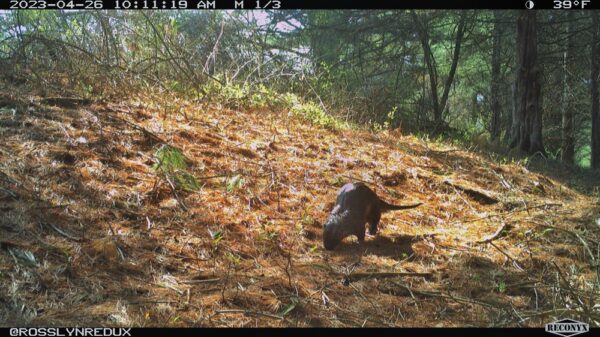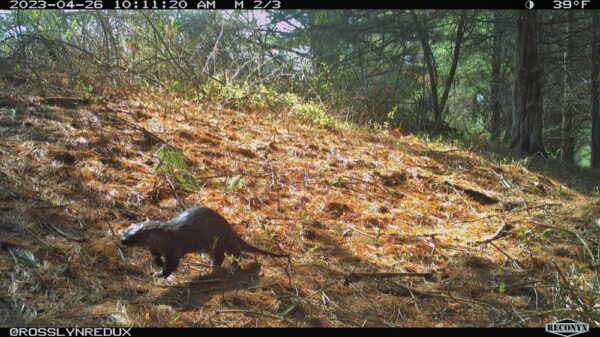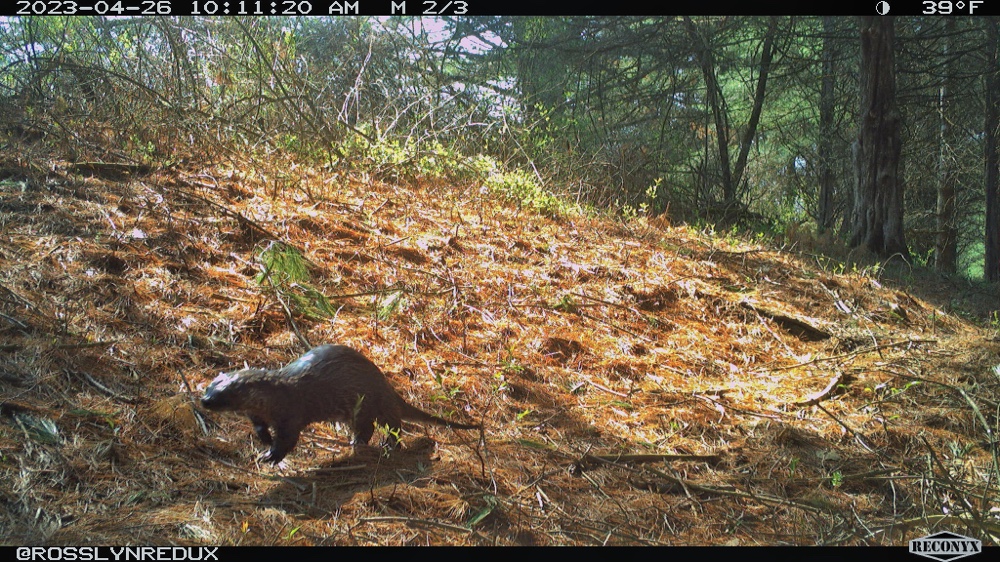Exciting news to share. Today while reviewing images from one of our wildlife cameras, I came across this pair of River Otter photographs. Our first sighting ever!

Better yet? As you can see, the date stamp is April 26, 2023, my birthday. So I’m choosing to see this rare encounter as a birthday gift from our wild neighbors, from nature, heck, from the universe itself.
The North American River Otter (Lontra canadensis) is apparently a common resident of these environs, but they’re elusive. I’ve come across their tracks and slides in the snow on frozen streams, rivers, and ponds, but I’ve never been fortunate enough to witness one firsthand. Nor have we captured photos on our cameras until now, so these less-than-perfect images hold special value. And they serve as encouraging evidence that Rosslyn’s wildlife sanctuary is thriving.

Rather than fumbling my way forward with a cobbled, secondhand introduction to River otters I’ll defer to a more knowledgeable source.
The playful North American river otter, a member of the weasel family (Mustelidae), is well adapted for semi-aquatic living. The mammals have thick, protective fur to help them keep warm while swimming in cold waters. They have short legs, webbed feet for faster swimming, and a long, narrow body and flattened head for streamlined movement in the water. A long, strong tail helps propels the otter through the water. They can stay underwater for as many as eight minutes. North American river otters have long whiskers, which they use to detect prey in dark or cloudy water, and clawed feet for grasping onto slippery prey. They are very flexible and can make sharp, sudden turns that help them catch fish. Their fur is dark brown over much of the body, and lighter brown on the belly and face. On land a river otter can run at speeds of up to 15 miles (24 kilometers) an hour—they can slide even faster. Their playful snow and mud sliding, tail chasing, water play, and snow burrowing activities also serve other purposes—they help strengthen social bonds and let young otters practice hunting techniques. (National Wildlife Federation)
Many thanks to John Davis for setting and monitoring Rosslyn’s wildlife cameras. It is John’s stewardship and oversight that underpin Rosslyn’s increasingly robust wildlife population.

Leave a Reply